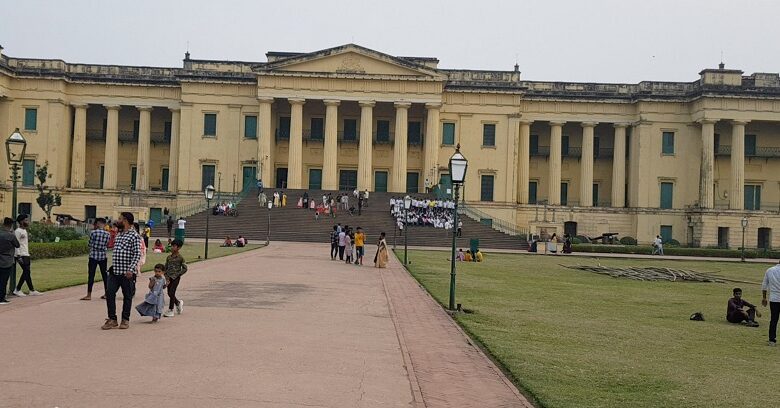Murshidabad: A Symphony of Art, History, and Culture
News Mania Desk / Piyal Chatterjee/ 29th December 2024

Set along the tranquil banks of the Bhagirathi River in West Bengal, Murshidabad is an epitome of India’s rich cultural and historical legacy. Once a flourishing capital during the Mughal era, this city remains a repository of architectural marvels, vibrant traditions, and an enduring past. For those who wish to immerse themselves in the grandeur of a bygone era, Murshidabad offers an unmatched tapestry of experiences.
Murshidabad’s illustrious history took root in the early 18th century when Nawab Murshid Quli Khan, the first independent Nawab of Bengal, moved the capital from Dhaka to this strategically located town. Named after him, the city soon burgeoned into a hub of commerce, governance, and culture. It thrived under the rule of the Nawabs, becoming a critical center of trade, particularly in textiles and silk, which were highly sought after across the globe.
The city, however, witnessed a dramatic shift following the Battle of Plassey in 1757. This fateful event, which marked the ascent of British power in India, led to a gradual decline in Murshidabad’s political significance. Nevertheless, the city’s cultural and architectural treasures remain well-preserved, offering visitors a window into its illustrious past.
Murshidabad’s skyline is adorned with architectural gems that reflect an intriguing amalgamation of Mughal, Bengali, and European styles. The Hazarduari Palace, or the “Palace of a Thousand Doors,” stands as a testament to this confluence. Constructed in 1837 by architect Duncan Macleod for Nawab Nazim Humayun Jah, the palace is a sprawling edifice showcasing regal opulence. Housing an impressive museum, it boasts an extensive collection of artifacts, including antique weaponry, manuscripts, and artworks that narrate the city’s storied past.
Adjacent to this iconic structure lies the NizamatImambara, one of the largest imambaras in India. Commissioned in 1847 by Nawab Mansur Ali Khan, the structure’s austere beauty and religious significance make it a centerpiece of Murshidabad’s cultural landscape.
Equally captivating is the Katra Mosque, built in 1723 by Nawab Murshid Quli Khan. With its imposing domes and lofty minarets, this mosque is a splendid example of Mughal architecture. The Nawab’s tomb, located within its precincts, lends an air of sanctity and historical gravitas to the site.
Murshidabad’s culture is a rich tapestry woven with threads of its historical prominence and artistic endeavors. The city’s famed Murshidabad silk remains a hallmark of its craft heritage. Known for its unparalleled finesse, intricate patterns, and vibrant hues, Murshidabad silk has adorned royalty and continues to be prized by connoisseurs.
Beyond silk, the city is renowned for its exquisite ivory carvings, brassware, and wooden artifacts. These crafts, nurtured over generations, underscore the artistic prowess of the region’s artisans. Visitors can explore local workshops and markets to witness the creation of these masterpieces and take home a piece of Murshidabad’s rich legacy.
The festivals of Murshidabad offer an enthralling glimpse into its cultural vibrancy. Durga Puja, celebrated with grandeur and devotion, transforms the city into a realm of artistic splendor and spiritual fervor. Intricately designed pandals, traditional rituals, and cultural performances draw both locals and visitors, creating an atmosphere of communal celebration.
Muharram, observed with solemnity by the city’s Shia Muslim community, highlights Murshidabad’s religious harmony. The processions and ceremonies during this period reflect a deep sense of reverence and unity, offering a poignant reminder of the city’s diverse cultural fabric.
The Bhagirathi River adds a tranquil charm to Murshidabad’s historical allure. A boat ride along its calm waters provides panoramic views of the city’s architectural splendors and a glimpse into the lives of its people. The gentle rhythm of the river mirrors the pace of life in Murshidabad, inviting visitors to unwind and connect with its serene beauty.
Kathgola Gardens, a verdant oasis, is another must-visit destination. Encompassing the stately Kathgola Palace, this garden offers a perfect blend of natural beauty and historical intrigue. Walking through its manicured paths, visitors can enjoy a sense of peace while marveling at the remnants of its aristocratic past.
The warmth and hospitality of the locals add to the charm of a visit to Murshidabad. From enthusiastic guides recounting fascinating tales of the city’s history to artisans eager to share their craft, the people of Murshidabad ensure that every visitor feels welcomed and enriched.
While Murshidabad’s treasures have stood the test of time, they demand collective efforts for preservation. Sustainable tourism practices and active involvement in restoration initiatives are essential to safeguarding the city’s heritage. Travelers can contribute by supporting local businesses, respecting historical sites, and spreading awareness about the importance of conservation.
Murshidabad is more than a city; it is a journey through the annals of history, a celebration of artistic excellence, and a testament to India’s enduring cultural richness. As you walk through its majestic palaces, explore its vibrant markets, and soak in the serenity of its riverbanks, Murshidabad promises to leave an indelible mark on your soul. A visit to this enchanting destination is not merely a trip but an experience that bridges the past and the present, creating memories to treasure forever.






